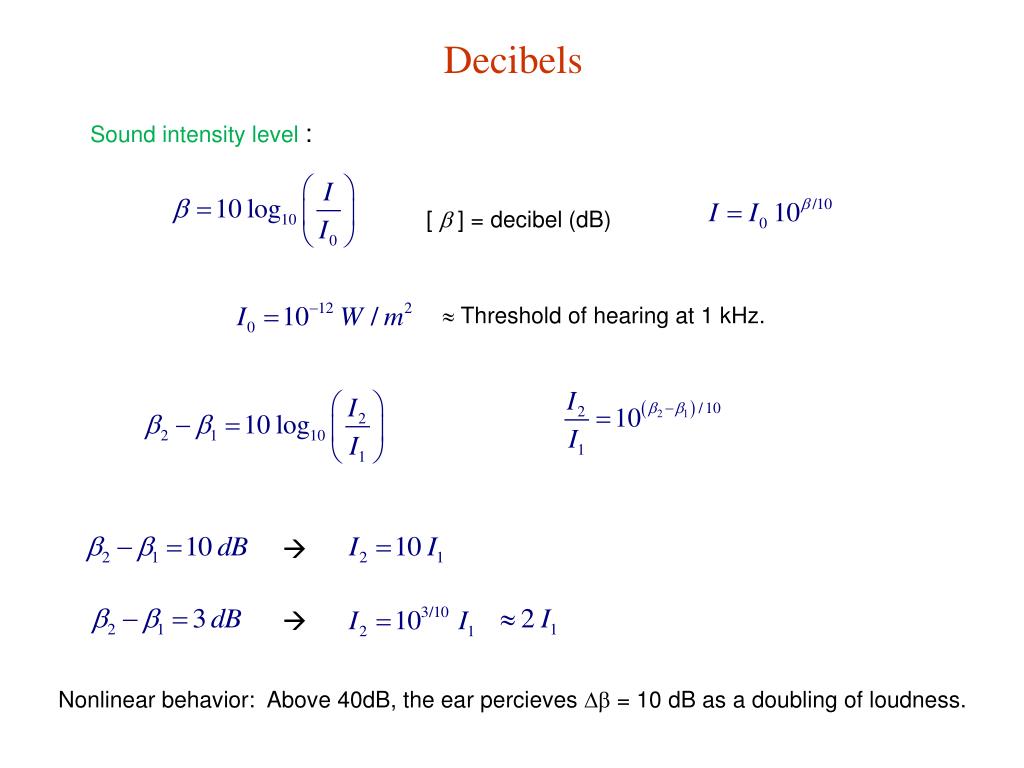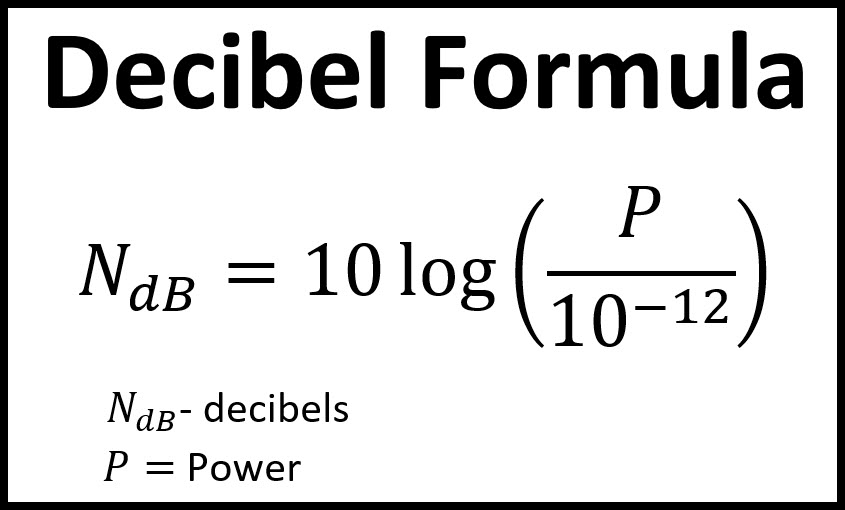

In this equation, P1 is usually the reference power. Thus the formula becomes Decibels (dB) 10 log (P2/P1) With the constant almost always included in modern terminology and power referred to as a ten log function. After setting up our equipment, we detect a background noise intensity of 1 × 10 -11 (0.00000000001) watts/square meter. A 10:1 power ratio 1 bel +-10 dB a 100:1 ratio 2 bels 20 dB. For the purposes of this problem, let's say that we're music producers and we're trying to find the background noise level in our recording studio to improve the sound of our records.

In physics, decibels are often thought of as a convenient way of expressing the intensity of a sound wave. However, the truth is a little more complex. The decibel (dB) is a logarithmic unit used to express the ratio of two signal values - like power, sound power or pressure, voltage, intensity etc. For everyday practical purposes, decibels are usually seen as a simple measure of loudness. Immediate hearing loss or eardrum rupture possibleįind your sound's intensity in watts/square meter. A sound that is 1010 or 100 times more intense (110-10 W/m2) is. May be immediately painful damage after lengthy exposure very likely A sound that is 10 times more intense ( 110-11 W/m2) is assigned a sound level of 10 dB. Serious damage likely after lengthy exposure Likely hearing damage after lengthy exposure Lawn mower, motorcycle at 25 feet (7.62 meters) Possible hearing damage after lengthy exposure
#Decibel equation tv#
TV volume, Freeway traffic at 50 feet (15.2 meters)įactory noise, food processor, car wash at 20 feet (6.1 meters) Relaxed conversation, ordinary suburban activityīusy office or restaurant noise, loud conversation Library noises, quiet urban background noise Decibel Levels of Common Noise Sources X Research source Decibels In addition, information on hearing damage from exposure to each level of noise is given. In the table below, rising decibel levels are assigned to common sources of noise.


 0 kommentar(er)
0 kommentar(er)
